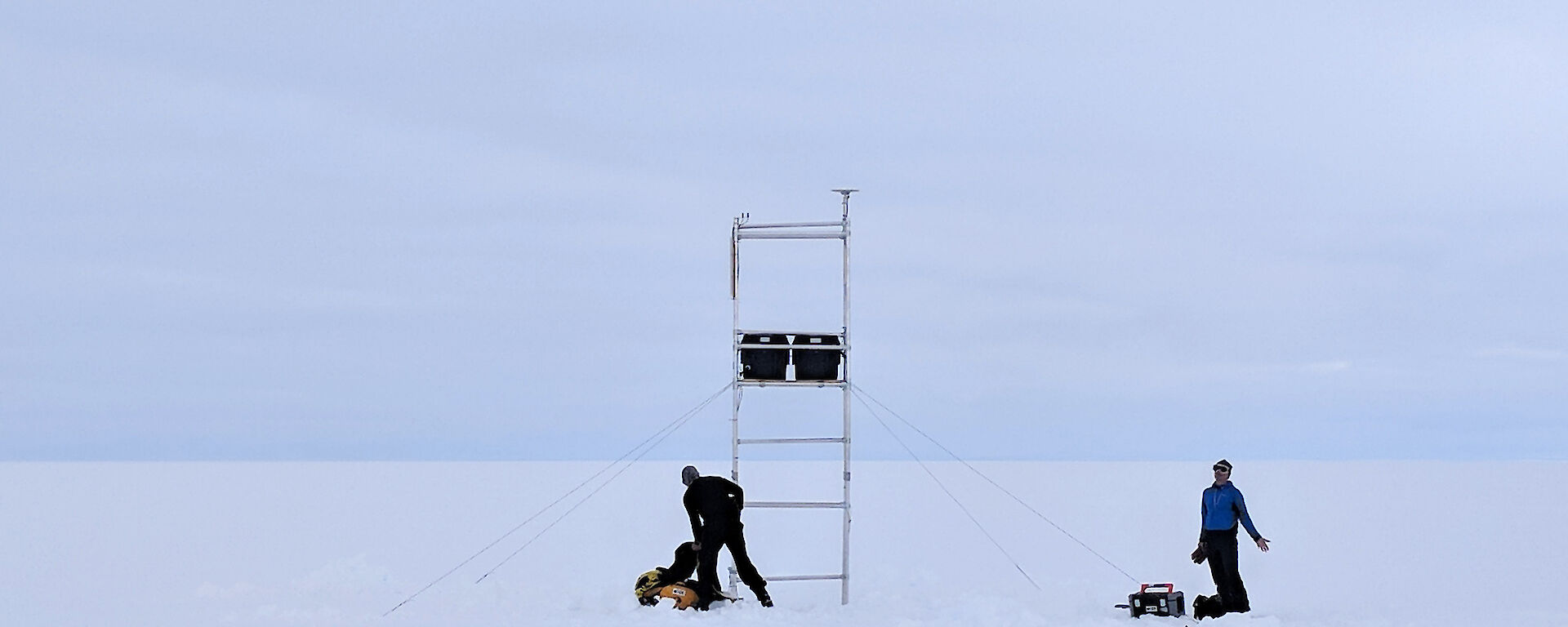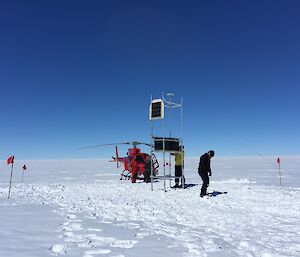More of the Totten Glacier is floating on the ocean than previously thought, increasing its potential to contribute to global sea level rise.
Glaciologist, Dr Ben Galton-Fenzi, said the Totten Glacier is one of the fastest flowing and largest glaciers in Antarctica and until now scientists thought more of it was grounded on Antarctic bedrock.
As part of the Australian Antarctic Program, Dr Galton-Fenzi’s team of researchers, including scientists from the Australian Antarctic Division, University of Tasmania’s Institute for Marine and Antarctic Studies, and the Central Washington University, spent the summer in Antarctica studying the Totten.
Professor Paul Winberry, from Central Washington University, said seismology allowed them to determine the structure of the earth below the surface of the glacier.
“A hammer-generated seismic wave was used to ‘see’ through a couple of kilometres of ice. In some locations we thought were grounded, we detected the ocean below indicating that the glacier is in fact floating,” Professor Winberry said.
Professor Winberry said if more of the glacier is floating on a warming ocean, it may help explain recent periods of accelerated melting and flow.
“It also means the Totten might be more sensitive to climate variations in the future.”
Dr Galton-Fenzi said the Totten Glacier, which is more than twice the area of Victoria, contains enough ice to raise global sea levels by about three metres if it all melted.
“Since the 1900s the global sea-level has risen by around 20 centimetres and by the end of the century it’s projected to rise by up to one metre or more, but this is subject to high uncertainty which is why studying glaciers such as the Totten is important,” Dr Galton-Fenzi said.
“These precise measurements of Totten Glacier are vital to monitoring changes and understanding them in the context of natural variations and the research is an important step in assessing the potential impact on sea-level under various future scenarios.”
Instruments to measure the glacial flow, speed and thickness have been left on the glacier for another 12 months collecting data. The field season was supported by the Australian Research Council Antarctic Gateway Partnership.



